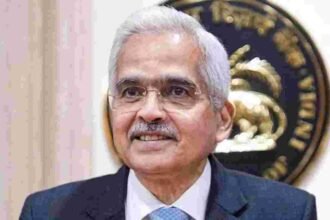RBI is the central bank of India and is also known as a banker’s bank. RBI Act of 1934 established the Reserve Bank and it started its operation in 1935.
The Central office of the Reserve Bank was established in Calcutta at first, but it was permanently moved to Mumbai in 1937. Reserve Bank was nationalised in 1949.
RBI as an Organization
- In the Reserve Bank’s Organisational structure, the Central Board of Directors is at the top. The Governor appoints them under the RBI Act 1934.
- The Governor is the chief executive of RBI and he/she supervises and directs the affairs of RBI. The management team also consists of Deputy Governors and Executive Directors.
- The Central Government nominates 14 Directors, including 1 Director each from the 4 Local Boards, and the other 10 Directors represent different sectors of the economy.
- All these appointments are made for 4 years.
Subsidiaries of the Reserve Bank of India
- Deposit Insurance and Credit Guarantee Corporation of India (DICGC)
- Bharatiya Reserve Bank Note Mudran Private Limited (BRBNMPL)
These are the fully owned subsidiaries of RBI.
Now let’s dive into the subsidiaries of RBI
Deposit Insurance and Credit Guarantee Corporation of India(DICGC)
- DICGC was established under the DICGC Act 1961. It ensures all deposits like savings, fixed, current, and recurring deposits with eligible banks.
- All commercial banks including the branches of foreign banks operating in India, Local banks, and rural banks are covered under DICGC.
Bharatiya Reserve Bank Note Mudran Private Limited (BRBNMPL)
- RBI established BRBNMPL as a fully owned subsidiary to increase the production of banknotes in India and to enable the joining gap between supply and demand for banknotes.
- BRBNMPL has been registered as a public limited company under the Companies Act, of 1956, its head office is located in Bengaluru.
Functions of the Reserve Bank of India (RBI)
Functions of the Reserve Bank of India (RBI):
- It Formulates, Implement and monitors monetary policy.
- It maintains price stability by increasing or decreasing monetary rates.
- Manages the Foreign Exchange under the Foreign Exchange Management Act, of 1999.
- Issues and exchanges or destroys currencies and coins that are not fit for circulation.
- Maintains Banking accounts of all scheduled Banks, Performs merchant banking functions for the central and the state governments, and also acts as their banker
The Central Government nominates 14 Directors, including 1 Director each from the 4 Local Boards, and the other 10 Directors represent different sectors of the economy. All these appointments are made for 4 years.
RBI performs its supervision under the guidance of the Board of Financial Supervision(BFS). BFS was constituted in Nov 1994 as a committee of the Central Board of Directors of the Reserve Bank of India. The objective was to undertake overall supervision of the financial sector, which consisted of commercial banks, financial institutions, and non-banking finance companies.
It Formulates, Implement and monitors monetary policy. It maintains price stability by increasing or decreasing monetary rates. Manages the Foreign Exchange under the Foreign Exchange Management Act, of 1999. Issues and exchanges or destroys currencies and coins that are not fit for circulation. Maintains Banking accounts of all scheduled Banks, merchant banking functions for the central and the state governments, and also acts as their banker.
Current Governor
Current Governor of RBI is Shaktikanta Das. and 4 Deputy Governors are BP Kanungo, Dr M.D. Patra, M Rajeshwar Rao, and MK Jain.
RBI has 27 regional offices, most of which are in the state capital, and 04 sub-offices, and it has 5 training establishments namely, Agricultural Banking and Reserve Bank of India Staff College, National Institute of Bank Management, Indira Gandhi Institute for Development Research, Institute of Development and Research in Banking Technology etc.
RBI is the central bank of India and is also known as a banker’s bank. RBI Act of 1934 established the Reserve Bank and it started its operation in 1935.
The Central office of the Reserve Bank was established in Calcutta at first, but it was permanently moved to Mumbai in 1937. Reserve Bank was nationalised in 1949.
For More RBI related news visit this link.













